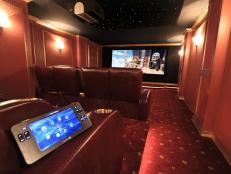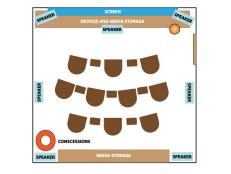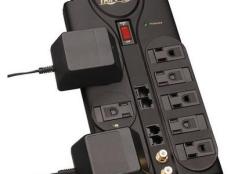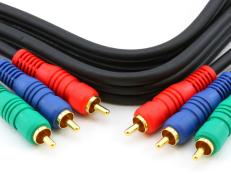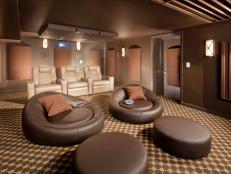Home Theater Installation
Once the design plans for your home theater are finalized, you've hired the contractors, the appropriate building permits are in hand and all the gear, furniture and materials are in house, construction can begin.
New Construction
With a new structure, most of the work will be done by contractors. As the homeowner, your job is to be sure that your plan and purchases are communicated to the contractor. Ensure every detail has been considered before work begins and that you fully understand the way it is being done. That way, you can change equipment and access wiring and gear in the future.
Material choices are essential. Make sure your contractor is meeting all specifications, especially for drywall and carpeting. Special acoustically optimized drywall should be specified, and check that it's actually being used during construction by looking at the labeling.
Before installation, inspect that all wiring meets your specifications for shielding and gauge, and that a whole-home surge protection unit is used. Check that framing is in the right locations for mounting the projector or TV, screen and speakers and that customer mounts or brackets are created.
Planning, and plan execution, like any construction job is a partnership between you and your contractors, so be actively involved in each phase of construction and installation.
Remodeling an Existing Room
If you are remodeling an existing room yourself, here are the major steps:
- Start by removing all items from the room, including carpeting if that is being replaced.
- Seal off the room with plastic sheathing over doors.
- If you are doing a full makeover, you will want to start with demolition of the walls (and possibly ceiling) by removing all the drywall. This will provide full access to electrical runs and lighting fixtures.
- Remove all debris and carpeting (if you are changing carpeting), vacuum.
- Install all electrical runs and wiring, along with all cables that will connect the projector or TV to the component gear. Install all of the wiring with labels at frequent locations.
- Shore-up or make mounting studs at exact locations for the TV, projector, speakers and all wall switches and electrical outlets.
- If you are building raised seating or adding outlets to the floor, run the wires and test the connections.
- Add the tiered flooring if it is planned.
- Install all light fixtures and recessed lighting.
- Test all electrical connections, heating controls and dimmers. Test all remote controlled outlets and thermostats before going further. If needed, get an electrical and structural inspection from your local inspector.
- Before proceeding, make a full diagram of the final wiring and connector locations. This will be useful for changes in the future. Mark the location, within walls, ceiling or doors, of all wiring runs.
- If using a drop-down screen, install and test it.
- If you are installing a new door, hang and test the door. Install cabinets or storage units at this time.
- Install acoustic drywall per manufacturer instructions, tape, add joint compound and seal it. Vacuum.
- Paint any wall areas, finish door with stain or paint, add wallpaper if chosen, finish all trim.
- Add trim, molding and finish the trim plates on fixtures.
- Install all mounting brackets.
- Lay the carpet or carpet tiles.
- Hang drapes or acoustic panels.
- Install all electronics, TV, screen, speakers and test all equipment and connections.
- Place seats, tables and table lighting. Place any other furniture or special items such as popcorn machine.
- Test lighting, equipment, sound system and then overall fit and finish.
Taken one step at a time, you can do much or all of the work yourself. By starting with a clean room down to its studs, you can renovate an existing room into a home theater that's just as good as new construction.
Also, think creatively when retrofitting an existing room to be a home theater. Here are some helpful solutions to common remodeling issues:
Windows. Use light blocking drapes or draping materials. Use drapes as full-wall or even full-room wall coverings. Theaters of old often used draped materials on the walls (velvet and satin were typical movie palace wall treatments). Create wall coverings from draping materials to block light, help deaden sound and create a theater ambience.
Closets. Use the closet as the location for wiring connections and devices. A wire rack allows equipment to be accessed freely. This makes your room "larger" since you will not have to add a storage area for the gear by building out a wall or adding a storage cabinet in the room itself.
Doors. If your existing room has an arched doorway or multiple doors, you may wish to close off open or arched doorways and convert a standard door to French doors.
Flooring. If your ceiling height is adequate (9-foot, for example), you can build flooring tiers to elevate rows of seating toward the back of the room. This is a simple task but must meet building codes.
Rules for remodeling an existing room also work well for new construction. The use of drapes for wall covering, a closet-type equipment area, French doors and tiered flooring are elements that can be used in either scenario.
Once you've completed the home theater and the seats are in, the projector is on and the lights go dim, it's time to sit back with family and friends and enjoy the show.








